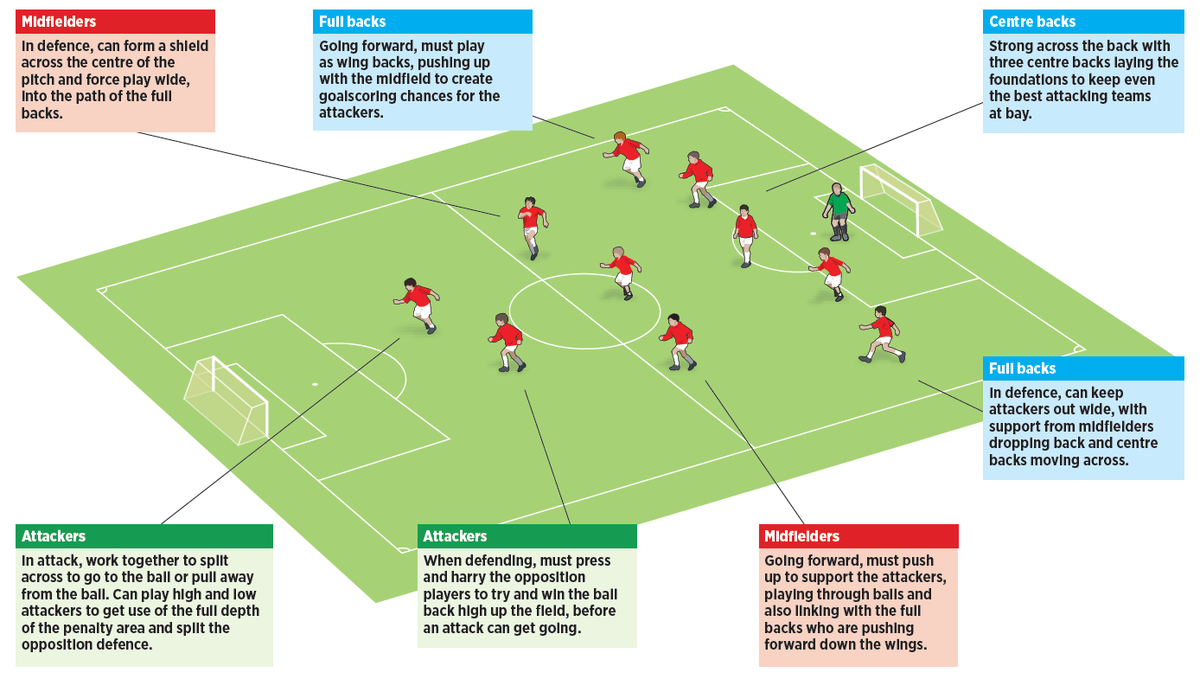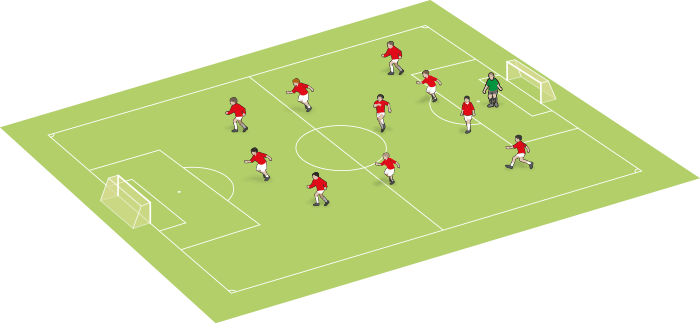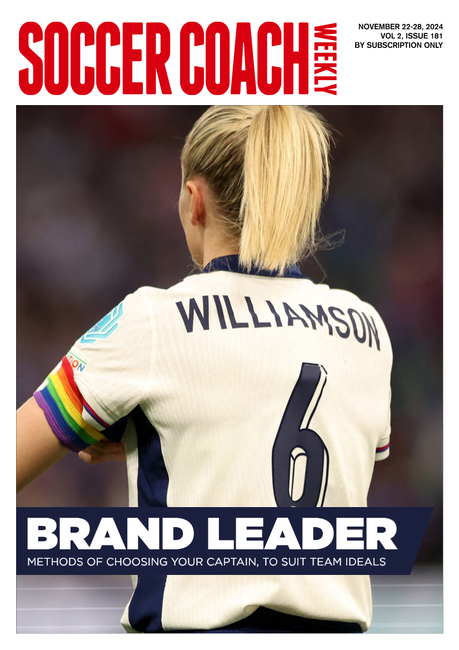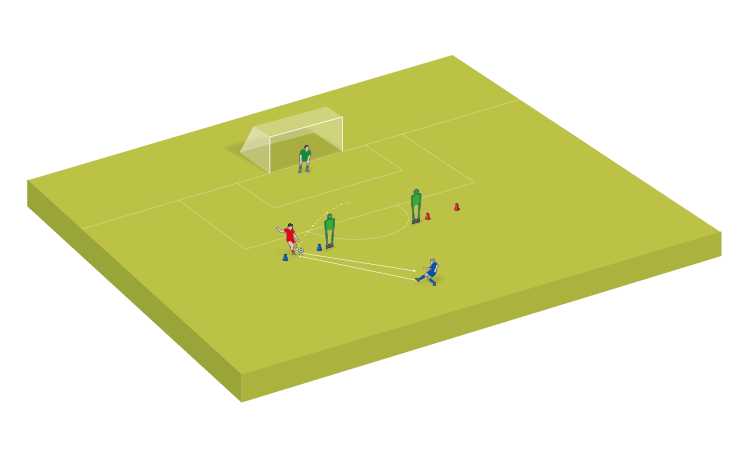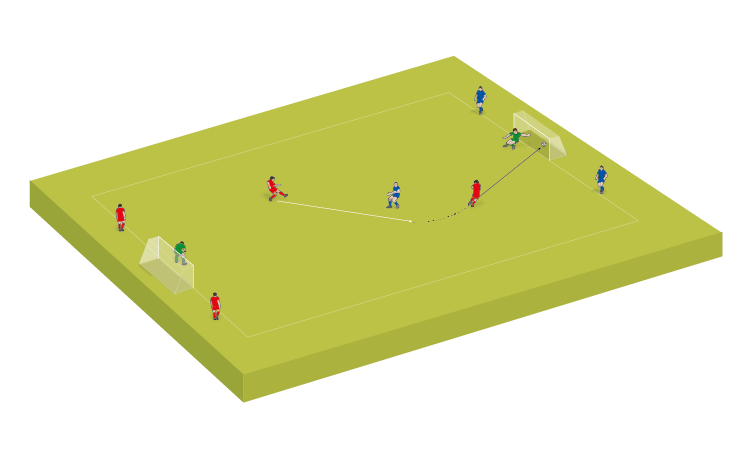11v11 formations 3-5-2
Very popular formation that is very attacking with three at the back, and wingbacks that need to work hard to support defence, midfield and attack
FOR
Five across the middle of the park means teams can “strangle” the midfield, creating attacking threat as well as doing a lot to protect what is a light defence. And three covering the immediate goal area is a formidable obstacle to shoot past.
AGAINST
As with the 3-4-3, the defence is left exposed because there are only three designated men in place. That should still leave at least one spare man against most strike forces, but the defensive line does require experience and communication, usually from the middle defender, who must also be confident and competent in playing forward.
PLAYER DEVELOPMENT
Great for learning how to play out from the back. Very good for developing responsibilities in the three areas of the pitch, with wide midfield/wing back and centre back play central to the formation. You should ensure your players have the opportunity to experience every position in this formation to help their development and understanding.
ATTACK
A favourite formation for advancing a team that has learnt tactics from 4-4-2. It’s flexible, accessible and different, allowing full-backs to unleash their attacking potential. The two attackers have support from right across the midfield and up the wings, so they can play high/low or near post/far post.
In defence, can move around and press from the front making a nuisance of themselves as their opponents look to break through the five-player midfield.
When attacking, the front players will receive the ball from all areas of the pitch with the five midfielders pushing into the attacking half.
MIDFIELD
The midfield has a certain amount of freedom because behind them are three centre backs. The wide players in the five-man midfield must work hard to support the attack and defend the wings. This formation is not going to get overrun in midfield but players must be aware of the threat from balls over the top.
Wide midfielders
Must get back to defend the wings as the three defenders hold the middle.
When going forward, must move from the middle to the attacking third in support – using the width of the pitch is vital to take advantage of the two forwards.
Central midfielders
The central player in the trio can advance into an attacking position to give a front three, which will be difficult for defenders to repel.
Must communicate so at least one of them drops back when the team attacks to cover through balls and balls over the top.
DEFENCE
The success of a back three lies in its rigidity, if one defender goes walkabout, the remaining two will try to compensate, leaving massive holes. The five across midfield will have to tuck in and drop into any holes that are created in the backline. Can create panic in the defence when a goal is scored.
The three defenders run the game from the back and must tuck into a tight triangle to repel all invaders when under attack.
Attacks can start from the goalkeeper into the central defender who then brings the ball into midfield – great
for player development.
Newsletter Sign Up
Coaches Testimonials

Gerald Kearney, Downtown Las Vegas Soccer Club

Paul Butler, Florida, USA

Rick Shields, Springboro, USA

Tony Green, Pierrefonds Titans, Quebec, Canada
Subscribe Today
Discover the simple way to become a more effective, more successful soccer coach
In a recent survey 89% of subscribers said Soccer Coach Weekly makes them more confident, 91% said Soccer Coach Weekly makes them a more effective coach and 93% said Soccer Coach Weekly makes them more inspired.
*includes 3 coaching manuals
Get Weekly Inspiration
All the latest techniques and approaches
Soccer Coach Weekly offers proven and easy to use soccer drills, coaching sessions, practice plans, small-sided games, warm-ups, training tips and advice.
We've been at the cutting edge of soccer coaching since we launched in 2007, creating resources for the grassroots youth coach, following best practice from around the world and insights from the professional game.
